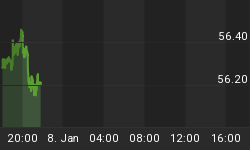The other day Bloomberg ran an article on how all those doomsayers predicting a repeat of the 1970s are delusional. This paragraph pretty much sums it up:
"Surely the reporters and editors who put out this tripe know the difference between the U.S. economy of the 1970s and today's 21st-century juggernaut...Do folks think a case of 2.5 percent real growth and 3 percent inflation -- a likely scenario for the second quarter -- qualifies as stagflation? If they do, they need to revisit those wonder years of the 1970s, when the economy was over-regulated, oil shocks had the ability to paralyze the nation and central bankers still thought there was a trade-off between growth and inflation."
With yesterday's upward revision of 1st quarter GDP to a gorgeous 5.3%, this might be a good time to consider the whole "21st century juggernaut" idea. But where to begin...I guess first it should be pointed out that thanks to John Williams at Shadow Government Statistics, we now know that if the government hadn't changed the way it calculates things like inflation and unemployment, today's economy would be putting up 1970s style numbers already.
But even if you accept the accuracy of government numbers, the focus on headline numbers like GDP, employment and inflation misses the point by ignoring the other side of the ledger. It's not just how many people are working and paying taxes, for instance, it's how much we have to borrow to create each new job. Countries, like companies, have to understand their return-on-investment to know how they're doing.
So let's see how today's America stacks up against the wheezing invalid of the 1970s. On jobs, for instance, back in the 1970s it took about $370,000 of new debt to create each new position, while in the first half off this decade it took $2.5 million. Now, you could argue that the first five years of this decade were deceptive because they contain a recession in which the number of people working went down for a while. Fair enough, but 1) the 1970s included a nasty recession of its own, plus two oil shocks, and 2) when you look at just 2005, when employment was growing at a pretty good rate, the ratio is still ugly because debt spiked along with jobs. In other words, even when firing on all cylinders, today's America has to borrow twice as much to create a new job as it did thirty years ago.

Jobs are just one part of a really big system, so maybe we're getting some other kind of bang for our borrowed buck. What about housing, maybe the healthiest industry of the past five years? Nope. In the 1970s our parents borrowed $400,000 (adjusted for inflation) for each new house that was built, while today we're borrowing more than three times that much. Maybe that's the real source of the housing bubble: Not home prices, but the amount of money we owe on our homes.

Or how about business investment, which would bring tech into the discussion, and which a lot of economists think will pick up the slack created by housing's soft landing? Sorry, but that's ugly too.

You can run the same kind of analysis on pretty much any seemingly-benign economic statistic, in the U.S. and most other non-OPEC countries, and get similar results. We're all borrowing more and more each year to produce those comforting headline numbers. We're all printing paper currency at whatever rate it takes to keep the headline writers happy. And we're all, with the U.S. in the lead, approaching a time when our choices narrow to only two: Borrow and/or print fresh paper until our currencies enter a death spiral, or refuse to pay and go bankrupt en mass.
Which takes us -- as pretty much every economic debate does these days -- to the real question: If as a society we only have two ugly, seemingly mutually exclusive choices, how should investors play it? Hyperinflation means gold and land; deflationary depression means cash and long-term puts on banks and homebuilders. A lot of smart people are weighing in on one side or the other, and I'll summarize their thoughts in a later column. But for now, we should all be watching for signs of which way the cards will fall. As Sprott Asset Management's John Embry put it recently "This is THE question, really."
Note: For a more complete look at the U.S. economy's real productivity, see Michael Hodges' Grandfather Economic Report.
















